 |
| ”The Gods always smile on Brave Women” (Viking proverb) |
Easter has come and gone…and so have the chocolate eggs and bunnies, so I thought it would be a great time to have another adventure! This one has been more than a 8 months in the making and a lot of blood sweat and happy tears went into the conception, the research and the making of it. I am very happy to announce: VIKINGS !
I wanted to combine several ancient sheep breeds from the area where the Vikings hailed from: current Norway, Sweden, Iceland and the Faroe Isles. So the search started for the wool the Vikings would have used to make their sails and their clothes. It meant a lot of fun research and time to get it all happening.
Here is some information of the different ancient and rare breeds that have gone into the making of the VIKINGS blend:
The Spaelsau Sheep can be found in Norway but is definitely a conservation breed and is also known as Gammelnorsk Spaelsau or shorttailed old Norwegian.
The oldest type is the sheep that comes from the coastal; region of Norway and has been around for at least 300 years and are also called old feral Norwegian or Gammelnorsk sau.
Recently a program has started so this sheep breed did not disappear all together. The fleece that was used in this blend is from the fine innercoat, but the Vikings used the outer coat together with some of the inner coat combined to make their sails. It has been calculated by scientists that to make a single sail for the Viking ships more than 200 fleeces were needed. Fortunately it was also estimated that a sail like that would last about 30 to 50 years ! Now that is a lot of trips to England and France and maybe even the Americas !

Spelsau sheep in its natural environment
The Faroe Island sheep are from the Faroe islands and have been extremely important to the survival of the people on the islands for thousands of years.
The outer coat is very long (about 40cms !!!! ) but the innercoat is about 8 cm and very soft. For this blend the innercoat was used exclusively.
This breed of dual coated sheep is short tailed as well and is very closely related to the Spelsau and the Icelandics as well as the Shetland sheep.

Faroe island ewe and her cute lamb

Faroe island sheep contemplating hopping over to the other
island to find the pot of gold
The Gra Troender sheep from Norway is a very rare breed of domesticated sheep that originated from crossbreeding native landrace sheep with the now extinct Tautra sheep in the late 19th century. There are currently approximately 80 animals all happily grazing in Norway. Yes, they are super cute as well.
Originally bred in the Trøndelag region of Norway, from where the sheep derives its name, the Gra Troender are most commonly varying shades of grey and white in colour with distinctive white markings under the eyes.
The wool of the sheep is uniform with mean fibre diameter of about 27-30 micron and 2–3 kgs greasy fleece weight. The wool was traditionally used for handicrafts and the pelts were used for woolskin rugs. The adult live weight of ewes is between 70 and 80 kg. The mean litter size is 1.8 lambs born per year.
The present population numbers only around 80 sheep but it’s increasing. In 1998, the Committee on Farm Animal Genetic Resources established a project for collecting and freezing semen from Gra Troender sheep rams in an effort to revive the breed. The fibre is very lofty and resembles the Shetland wool but with a bit more weight to it. It has a wonderful spring and vibrancy and luster to it and it spins up beautifully.

the cute Gra Troender sheep
The Gutefar is an ancient sheep breed from Sweden, older than the Gotland.
Originally the Gute sheep were protected from “improvement” on the breed because they were in an isolated part of Sweden, however by the start of the 20th century the ancient Gute were mixed with other sheep to produce the hornless Gotland and less that 24 sheep of the ancient Gute sheep breed were left in the world.
Since then conservation breeding has helped this ancient sheep breed climb in numbers, but it is still a rare and vulnerable breed. It is not an easy fleece to process because there are layers and layers of inner and outer coat and kemp hairs to separate.
The separated inner coats are appr 17microns but you have to have the patience to sort it all out and separate it. A dehairer comes in handy !.
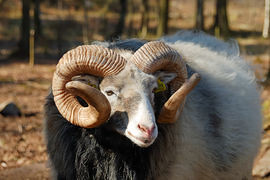
a Gutefar Ram
The Icelandic sheep is an ancient North European breed, slightly smaller than modern varieties, whose double-layered coat is uniquely suited to cold and wet conditions.
The inner layer, or thel, is insulating, superlight and very airy, while the outer layer, or tog, is long, strong and water repellent. Carded together, these two layers make lopi, versatile wool used to knit lopapeysa, the distinctive traditional Icelandic sweater.
Wool from the spring shearing is coarse and generally used to make carpets, while prized lopi wool comes from the autumn shearing.
A few weeks after the lambing in May, sheep are sent to run free and graze in mountain pastures until autumn, feeding on the rich and nourishing vegetation.
Many farmers formerly allowed their sheep to graze in outlying pastures over the summer months, but as a result of the recent reduction in flocks, animals are increasingly kept on home pastures. Farmers gather their flocks in the autumn.
Usually, the round-up is carried out on horseback with assistance of sheepdogs. The process can take up to a week. During this time, participants stay overnight in mountain huts located throughout the highlands. Each sheep farmer has his own earmark in order to identify his livestock.
After the gathering, the sheep are all sorted into designated pens, according to earmarks. Many people, farmers or not, come to watch or take part in this event on the last day, which is usually followed by a big celebration the same night. This is a tradition cherished by Icelanders.
Icelandic sheep are a beautiful and eye-catching breed of sheep with incredible colour variations and seventeen possible combinations of colours and patterns. Known around the world for their fibre, the Icelandic sheep provides a soft, lustrous dual coated fleece. Icelandic sheep come in a range of natural colours and patterns which provide lovely wool that is very versatile and easy to spin, making this wool a handspinners delight.
Like I said before, Icelandic fleece is dual-coated. In Icelandic the long outer coat is called tog and the fine inner coat þel. When separated, the outer and inner coats are used for different woolen products. Tog is generally classified as a medium wool around 27 micron. It is good for weaving and other durable products. Thel, being the finer wool and classified as such, is generally around 20 micron. Tog and Thel are processed together to produce lopi, a distinctive knitting wool that is only made from the fleece of Icelandic sheep. This process of combining medium or coarser wool fibres together with soft fibres is what I have been doing for as long as I can remember (angorino:superfine merino+angora and ofcourse the recent Viva Frida adventure with the Churro, agave, cashmere and angora,) and professionally, for about 13 years now with many other different kind of blends that adhere exactly to that principle. And this Icelandic process just proves the point I have been trying to make for years and sometimes made me feel like Don Quixote battling windmills: it creates a durable close to skin yarn and lovely to work with..
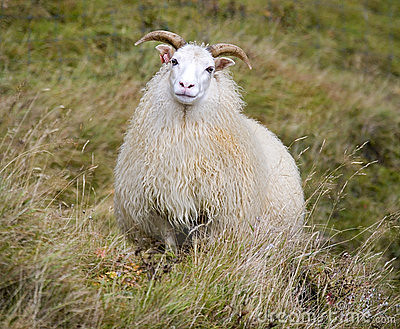
a cute Icelandic smiling sheep
For this Vikings adventure I thought to combine ancient sheep breeds with the dyes used in the times of the Vikings as well, so that meant a whole different research on what pigments were available at that time.
I was very surprised that indigo dyed garments were found because indigo is not grown so far north and woad can produce heaps of blues as well. I obviously did not realise the normous trade in pigments like indigo and even kermes (insects found on oak trees in the Mediterranean!)
If you want to know a bit more about dyeing in the days of the Vikings , please visit this page with heaps of information on the pigments and the methods used to dye the fibres: https://sites.google.com/site/zoemcdonell/naturaldyeing
The pigments I have chosen to recreate the VIKING atmosphere so to speak on this Adventure of Rare Sheep breed blend are the following:
INDIGO for its’ deep blue tonal values,
OAK GALLS for the inky greys it can produce like a thundery dark sky,
DANDELION and WOAD pigment combo to create an interesting haunting teal,
WALNUT for the menacing browns and last but not least
MADDER roots and fermented TURMERIC roots for a burgundy red/purple fit for a shield maiden. (although the use of madder grown in Viking age is not proven yet, there have been burial sites discovered where te clothing fragments that were found had traces of madder..so..there ya go..)
The Viking Adventure will be shipped start of may and you can choose between tops or batts.
I wanted to combine several ancient sheep breeds from the area where the Vikings hailed from: current Norway, Sweden, Iceland and the Faroe Isles. So the search started for the wool the Vikings would have used to make their sails and their clothes. It meant a lot of fun research and time to get it all happening.
Here is some information of the different ancient and rare breeds that have gone into the making of the VIKINGS blend:
The Spaelsau Sheep can be found in Norway but is definitely a conservation breed and is also known as Gammelnorsk Spaelsau or shorttailed old Norwegian.
The oldest type is the sheep that comes from the coastal; region of Norway and has been around for at least 300 years and are also called old feral Norwegian or Gammelnorsk sau.
Recently a program has started so this sheep breed did not disappear all together. The fleece that was used in this blend is from the fine innercoat, but the Vikings used the outer coat together with some of the inner coat combined to make their sails. It has been calculated by scientists that to make a single sail for the Viking ships more than 200 fleeces were needed. Fortunately it was also estimated that a sail like that would last about 30 to 50 years ! Now that is a lot of trips to England and France and maybe even the Americas !

Spelsau sheep in its natural environment
The Faroe Island sheep are from the Faroe islands and have been extremely important to the survival of the people on the islands for thousands of years.
The outer coat is very long (about 40cms !!!! ) but the innercoat is about 8 cm and very soft. For this blend the innercoat was used exclusively.
This breed of dual coated sheep is short tailed as well and is very closely related to the Spelsau and the Icelandics as well as the Shetland sheep.

Faroe island ewe and her cute lamb

Faroe island sheep contemplating hopping over to the other
island to find the pot of gold
The Gra Troender sheep from Norway is a very rare breed of domesticated sheep that originated from crossbreeding native landrace sheep with the now extinct Tautra sheep in the late 19th century. There are currently approximately 80 animals all happily grazing in Norway. Yes, they are super cute as well.
Originally bred in the Trøndelag region of Norway, from where the sheep derives its name, the Gra Troender are most commonly varying shades of grey and white in colour with distinctive white markings under the eyes.
The wool of the sheep is uniform with mean fibre diameter of about 27-30 micron and 2–3 kgs greasy fleece weight. The wool was traditionally used for handicrafts and the pelts were used for woolskin rugs. The adult live weight of ewes is between 70 and 80 kg. The mean litter size is 1.8 lambs born per year.
The present population numbers only around 80 sheep but it’s increasing. In 1998, the Committee on Farm Animal Genetic Resources established a project for collecting and freezing semen from Gra Troender sheep rams in an effort to revive the breed. The fibre is very lofty and resembles the Shetland wool but with a bit more weight to it. It has a wonderful spring and vibrancy and luster to it and it spins up beautifully.

the cute Gra Troender sheep
The Gutefar is an ancient sheep breed from Sweden, older than the Gotland.
Originally the Gute sheep were protected from “improvement” on the breed because they were in an isolated part of Sweden, however by the start of the 20th century the ancient Gute were mixed with other sheep to produce the hornless Gotland and less that 24 sheep of the ancient Gute sheep breed were left in the world.
Since then conservation breeding has helped this ancient sheep breed climb in numbers, but it is still a rare and vulnerable breed. It is not an easy fleece to process because there are layers and layers of inner and outer coat and kemp hairs to separate.
The separated inner coats are appr 17microns but you have to have the patience to sort it all out and separate it. A dehairer comes in handy !.

a Gutefar Ram
The Icelandic sheep is an ancient North European breed, slightly smaller than modern varieties, whose double-layered coat is uniquely suited to cold and wet conditions.
The inner layer, or thel, is insulating, superlight and very airy, while the outer layer, or tog, is long, strong and water repellent. Carded together, these two layers make lopi, versatile wool used to knit lopapeysa, the distinctive traditional Icelandic sweater.
Wool from the spring shearing is coarse and generally used to make carpets, while prized lopi wool comes from the autumn shearing.
A few weeks after the lambing in May, sheep are sent to run free and graze in mountain pastures until autumn, feeding on the rich and nourishing vegetation.
Many farmers formerly allowed their sheep to graze in outlying pastures over the summer months, but as a result of the recent reduction in flocks, animals are increasingly kept on home pastures. Farmers gather their flocks in the autumn.
Usually, the round-up is carried out on horseback with assistance of sheepdogs. The process can take up to a week. During this time, participants stay overnight in mountain huts located throughout the highlands. Each sheep farmer has his own earmark in order to identify his livestock.
After the gathering, the sheep are all sorted into designated pens, according to earmarks. Many people, farmers or not, come to watch or take part in this event on the last day, which is usually followed by a big celebration the same night. This is a tradition cherished by Icelanders.
Icelandic sheep are a beautiful and eye-catching breed of sheep with incredible colour variations and seventeen possible combinations of colours and patterns. Known around the world for their fibre, the Icelandic sheep provides a soft, lustrous dual coated fleece. Icelandic sheep come in a range of natural colours and patterns which provide lovely wool that is very versatile and easy to spin, making this wool a handspinners delight.
Like I said before, Icelandic fleece is dual-coated. In Icelandic the long outer coat is called tog and the fine inner coat þel. When separated, the outer and inner coats are used for different woolen products. Tog is generally classified as a medium wool around 27 micron. It is good for weaving and other durable products. Thel, being the finer wool and classified as such, is generally around 20 micron. Tog and Thel are processed together to produce lopi, a distinctive knitting wool that is only made from the fleece of Icelandic sheep. This process of combining medium or coarser wool fibres together with soft fibres is what I have been doing for as long as I can remember (angorino:superfine merino+angora and ofcourse the recent Viva Frida adventure with the Churro, agave, cashmere and angora,) and professionally, for about 13 years now with many other different kind of blends that adhere exactly to that principle. And this Icelandic process just proves the point I have been trying to make for years and sometimes made me feel like Don Quixote battling windmills: it creates a durable close to skin yarn and lovely to work with..

a cute Icelandic smiling sheep
For this Vikings adventure I thought to combine ancient sheep breeds with the dyes used in the times of the Vikings as well, so that meant a whole different research on what pigments were available at that time.
I was very surprised that indigo dyed garments were found because indigo is not grown so far north and woad can produce heaps of blues as well. I obviously did not realise the normous trade in pigments like indigo and even kermes (insects found on oak trees in the Mediterranean!)
If you want to know a bit more about dyeing in the days of the Vikings , please visit this page with heaps of information on the pigments and the methods used to dye the fibres: https://sites.google.com/site/zoemcdonell/naturaldyeing
The pigments I have chosen to recreate the VIKING atmosphere so to speak on this Adventure of Rare Sheep breed blend are the following:
INDIGO for its’ deep blue tonal values,
OAK GALLS for the inky greys it can produce like a thundery dark sky,
DANDELION and WOAD pigment combo to create an interesting haunting teal,
WALNUT for the menacing browns and last but not least
MADDER roots and fermented TURMERIC roots for a burgundy red/purple fit for a shield maiden. (although the use of madder grown in Viking age is not proven yet, there have been burial sites discovered where te clothing fragments that were found had traces of madder..so..there ya go..)
The Viking Adventure will be shipped start of may and you can choose between tops or batts.
Please don't hesitate to contact me at any time if you have any questions okay? Always happy to enable. All my contact details are to be found at the end of this week’s blog entry.
Ingredients:
Rare Sheep Breeds Adventure
VIKINGS
Tops 100+grams $24 SOLD OUT SORRY
Batts 150+grams $36 SOLD OUT SORRY
Ingredients:
Spelsau Sheep (Sweden),
Gra Troender ( Norway),
Gute Far (Sweden),
Faroe Island sheep (Faroe islands),
Icelandic (Iceland)
combined with
angora bunny,
cashmere
and a tiny little bit of glitz to resemble the sparkle on the water or the snowy landscape.
You can choose to sign up for batts or tops (or a combination of both), dyed or undyed.
I will only be able to dye for those who sign up and I only have a very limited supply of this Viking blend available.
Here are some photos that inspired me to choose the dye pigments and create that specific "Viking" mood (okay with a gratuitous Rollo without shirt on as an extra bonus thrown in..lol):
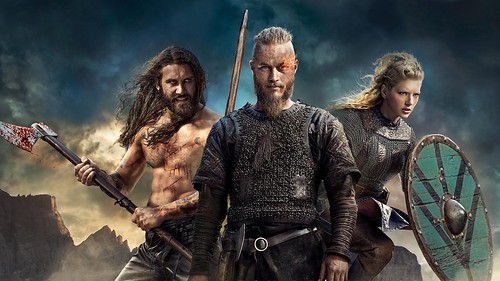
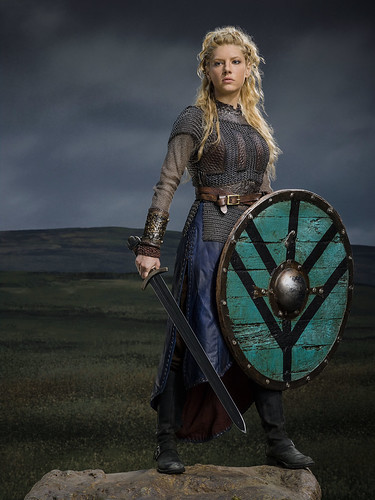

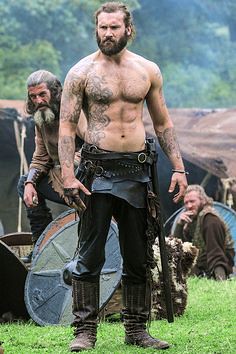 Just for you ....A Complementary Rollo for extra inspiration ….
Just for you ....A Complementary Rollo for extra inspiration …. 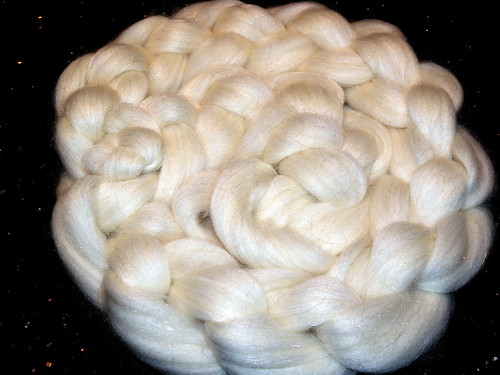
 ”naked” VIKINGS Tops
”naked” VIKINGS Tops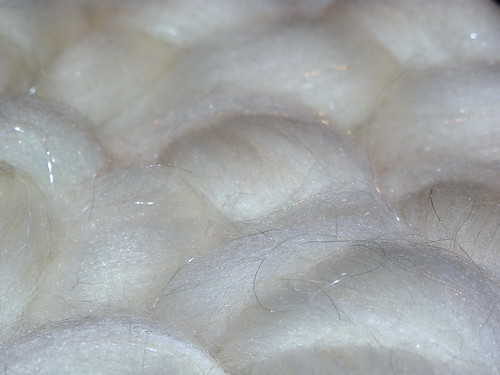
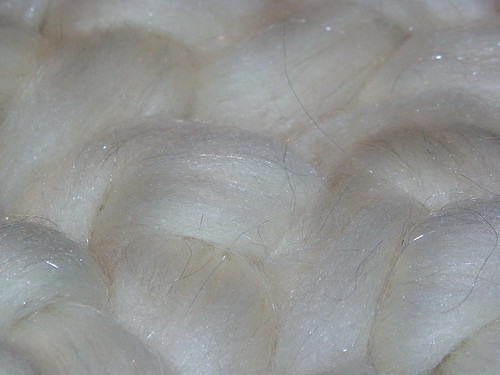 What’s better than “naked” Vikings?
What’s better than “naked” Vikings? A Close ups of “naked” Vikings….lol
Qiviut, Angora bunny, Cashmere, Tencel and silk
Handspun 4 ply Yarn
appr 160meters
+/- 50grams
AU$32
+/- 50grams
AU$32
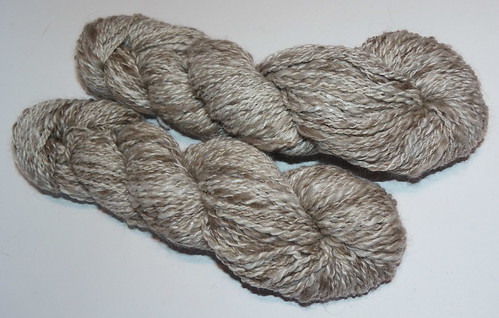 Natural
NaturalDates to put in your Calendar !!
April 18th
Monday 10am-2pm
Grandvalley Spinners and Weavers Spin in
Tapscott Hall, Corner Cambridge and Montrose rd, Montrose
May
Sunday May 29th
10am-3pm
Victorian Hand Knitters Guild Show
Coburg Town Hall
THE extra ordinary super fluffy yarny event in Melbourne !!!
I will be there with lots of hand dyed tops for spinning and felting and happy rainbow yarn and sock yarn, some extra special art yarns and much much more!!!! As well as some amazing Lair of the Bearded Dragon spindles and bowls that are pure magic to spin with !
JULY
Friday July 15th- Sunday 17th, 9am-5pm
Bendigo Sheep and Wool Show
THE event of the year !!!! Not to be missed!! I will be there in the Flower (Power Bunny) Shed again with heaps of new goodies, hand dyed and hand spun, IxCHeL new blends and rare sheep breed adventures and much much more ! Including a world first of something AMAZING AND FUN!!!!! Shhh not telling ! but it is AWESOME !!!!
OCTOBER
2nd of October
Black n Coloured Sheep FIELD DAY in Cranbourne!
Landscape dyes
100g tubs AU$11
Want to dye your own with easy to use acid dyes? I have been selling these Landscape dyes at my workshops and shows for a long time, just never thought to put them on my blog.
They are extremely easy to use and come in great shades.
Just contact me with the name of the colour you are after and I will get right back to you.
They are extremely easy to use and come in great shades.
Just contact me with the name of the colour you are after and I will get right back to you.
Have a creative week!
Please don't hesitate to contact me at any time if you have any questions okay? Always happy to enable.
All my contact details are to be found at the end of this week’s blog entry.
Have fun !!!
How To Order:
1. You can email me on ixchel at rabbit dot com dot au or ixchelbunny at yahoo dot com dot au
2. message me on facebook
3. message me on www.ravelry.com where I am Ixchelbunny.
I will email you right back with all your order details and payment methods.
Any questions? Any custom orders for yarn or dyeing fibre? Please don’t hesitate to ask! Always happy to enable.
2. message me on facebook
3. message me on www.ravelry.com where I am Ixchelbunny.
I will email you right back with all your order details and payment methods.
Any questions? Any custom orders for yarn or dyeing fibre? Please don’t hesitate to ask! Always happy to enable.
Thank you so much for your help and support !
RABBIT ON !
((hugs))
Charly




No comments:
Post a Comment